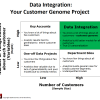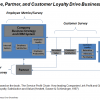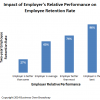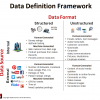One of business’ Big Data challenges is the integration of different data silos. The integration of these disparate customer data helps your analytics team to identify the interrelationships among the different pieces of customer information, including their values, interests, attitudes about your brand, interactions with your brand and more. Integrating information/facts about your customers allows you to gain an […]






![The Hidden Bias in Customer Metrics target[1]](https://businessoverbroadway.com/wp-content/uploads/2014/07/target1-100x100.jpg)



 Beyond the Ultimate Question
Beyond the Ultimate Question Measuring Customer Satisfaction and Loyalty (3rd Ed.)
Measuring Customer Satisfaction and Loyalty (3rd Ed.)